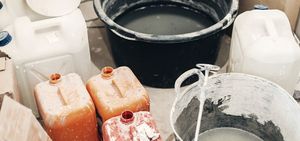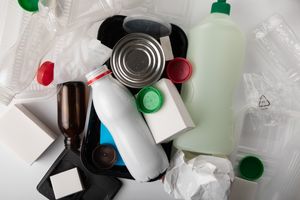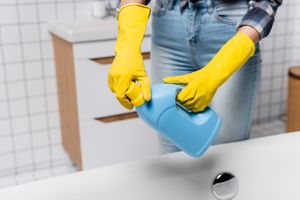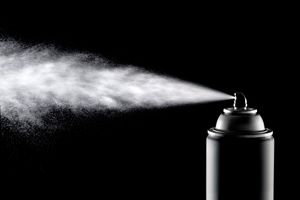Guide to Medium-Sized Hazardous Spill Cleanup
This is a info alert
This is a danger alert
This is a success alert
This is a warning alert
This is a dark alert
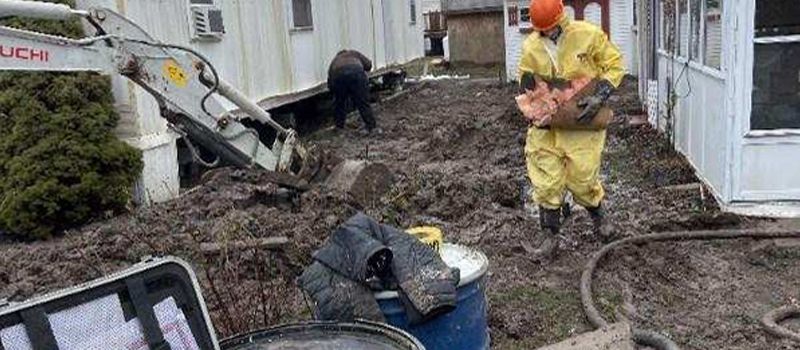
Introduction
Medium-sized hazardous spills, often occurring in industrial, commercial, or transportation settings, require a more structured response than small spills. These spills may involve larger quantities of chemicals, fuels, or hazardous waste that can pose environmental and health risks if not properly managed. This guide provides a step-by-step approach to responding to medium-scale spills in Western New York, ensuring compliance with state and federal regulations.
1. Common Medium-Sized Spills
A. Industrial & Commercial Spills
Leaks from storage drums (solvents, cleaning agents, fuels)
Chemical spills in manufacturing plants or warehouses
Waste spills from small-scale processing facilities
B. Transportation-Related Spills
Fuel or chemical spills from delivery trucks and cargo transport
Accidents involving tanker trucks carrying hazardous materials
Leaks during loading/unloading operations
2. Immediate Response Steps
A. Safety & Initial Assessment
Evacuate personnel if fumes or chemical exposure is a risk.
Secure the area by restricting access to prevent contamination.
Identify the substance using Safety Data Sheets (SDS) or transport labels.
Use Personal Protective Equipment (PPE) (gloves, respirators, protective suits) as needed.
B. Containment & Control
Use spill containment berms, booms, or absorbents to prevent spreading.
Block storm drains to protect water sources from contamination.
If the spill is flammable, shut down ignition sources (no smoking, turn off engines).
C. Reporting & Regulatory Compliance
Contact the New York State Department of Environmental Conservation (DEC) for reportable spills.
If the spill reaches water sources, notify the Environmental Protection Agency (EPA).
Follow OSHA spill reporting guidelines for workplace safety compliance.
3. Reporting Requirements for Western New York
Location | Reporting Agency | Contact Information |
|---|---|---|
Buffalo, NY | New York State DEC Spill Hotline | 1-800-457-7362 |
Niagara Falls, NY | Niagara County Emergency Management | 716-438-3171 |
Rochester, NY | Monroe County Department of Environmental Services | 585-753-7600 |
Document all spill incidents with photos and detailed reports.
Log response actions and materials used for cleanup.
4. Professional Spill Response & Cleanup Procedures
A. When to Call Professional Cleanup Services
When the spill involves large volumes (over 50 gallons) of hazardous material.
If the spill reaches storm drains, soil, or groundwater.
If special neutralization or hazardous material handling permits are required.
B. Steps Taken by Cleanup Teams
Site Evaluation & Risk Assessment – Determine contamination risks and proper containment methods.
Containment & Absorption – Deploy spill kits, neutralizing agents, and vacuum systems.
Decontamination & Disposal – Transport hazardous waste to an EPA-approved disposal facility.
Final Reporting & Regulatory Compliance – Ensure state and federal reporting requirements are met.
5. Preventative Measures & Spill Preparedness
A. Employee Training & Preparedness
Conduct regular hazardous spill response drills.
Ensure staff is trained on spill containment and PPE use.
B. Proper Storage & Maintenance
Label and store chemicals properly to minimize spill risks.
Conduct routine inspections of storage tanks, pipelines, and containers.
Maintain secondary containment systems for hazardous materials.
C. Have an Emergency Spill Response Plan
Create a Spill Prevention, Control, and Countermeasure (SPCC) Plan.
Ensure emergency contact numbers and spill kits are readily accessible.
Partner with local hazardous waste cleanup companies for rapid response.
Conclusion
Medium-sized hazardous spills require a swift and well-coordinated response to minimize environmental damage and ensure compliance with regulations. By having proper containment procedures, employee training, and emergency preparedness plans, businesses and transport operators in Western New York can effectively handle these incidents.
Need professional spill cleanup services? Contact local DEC-certified hazardous waste specialists to ensure proper remediation and compliance!
🔄 Next Steps in Spill Preparedness & Response
Looking to deepen your understanding or take action? Explore these related resources:
